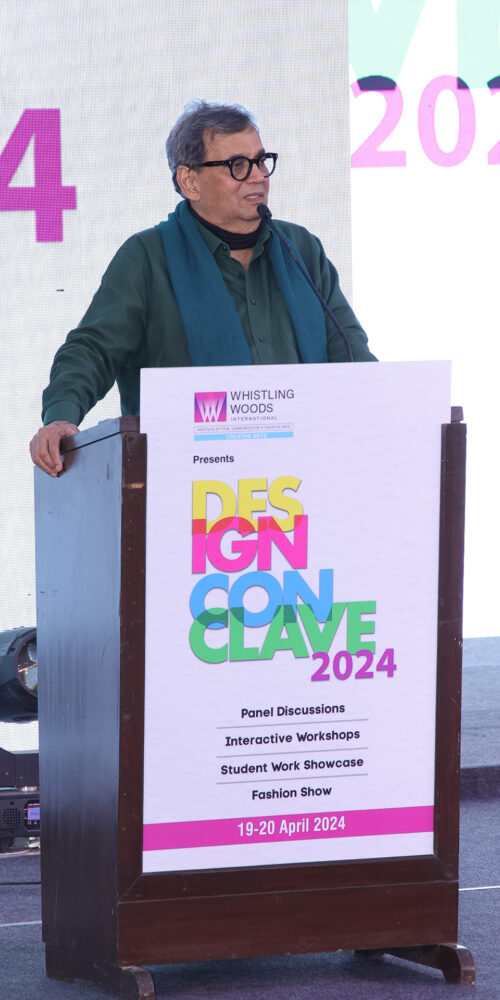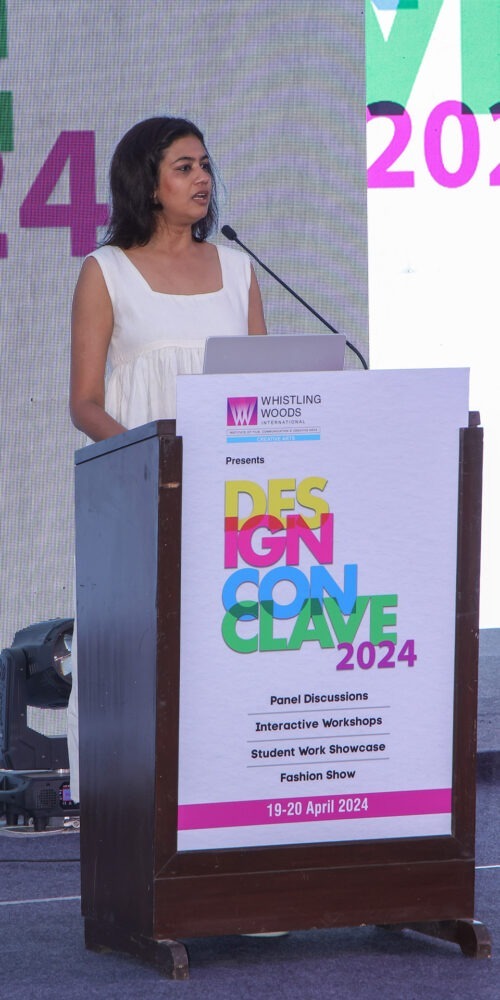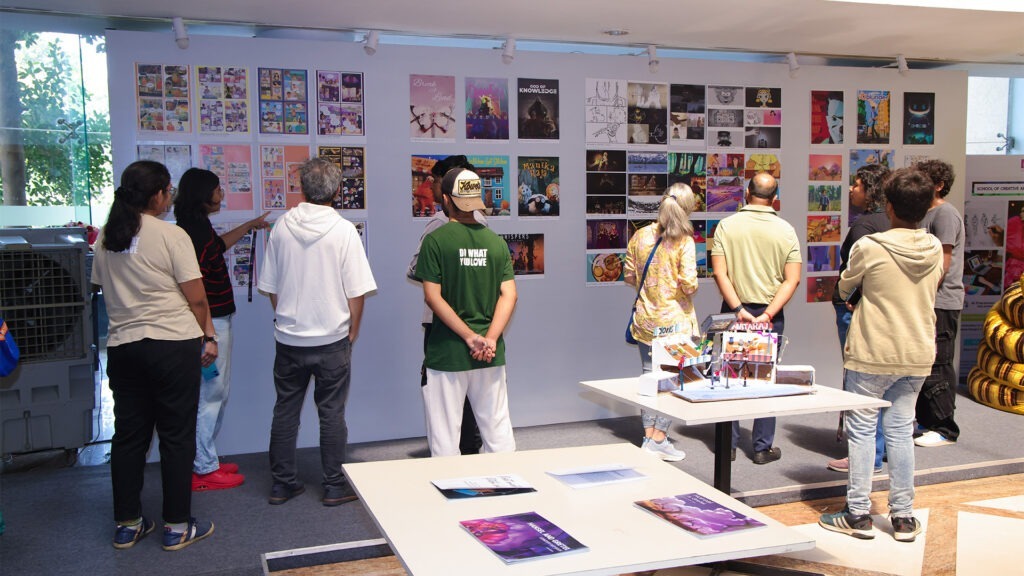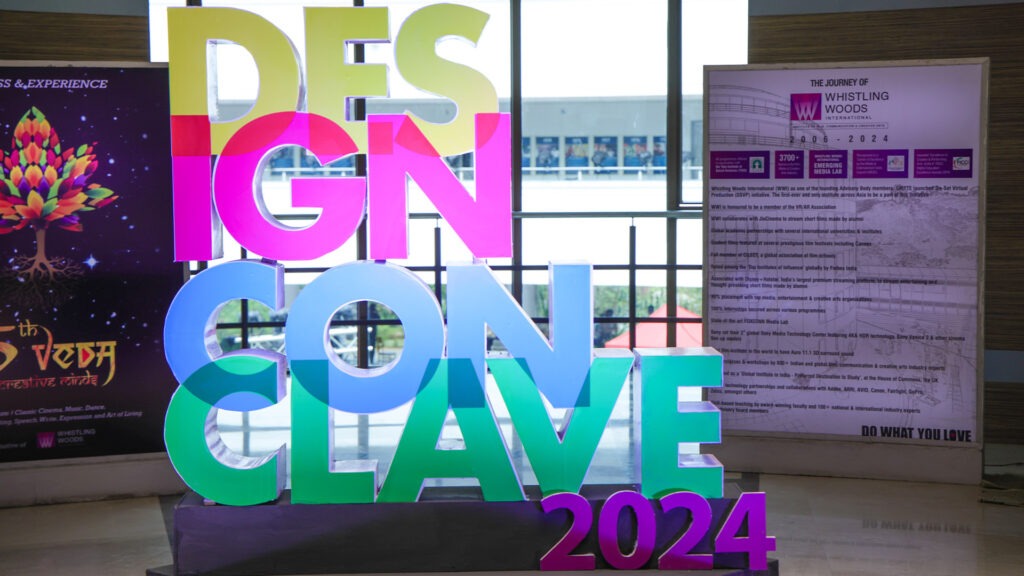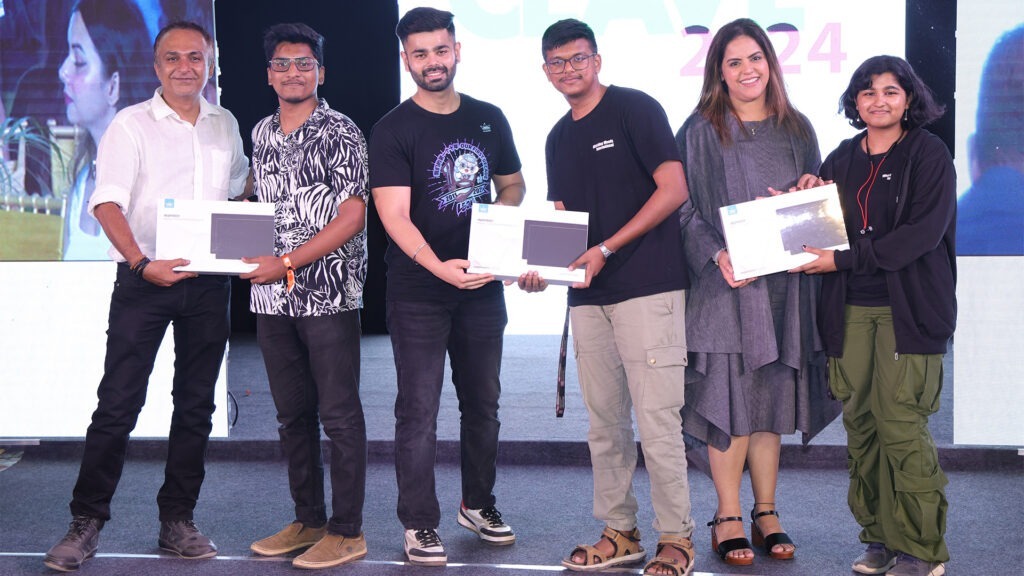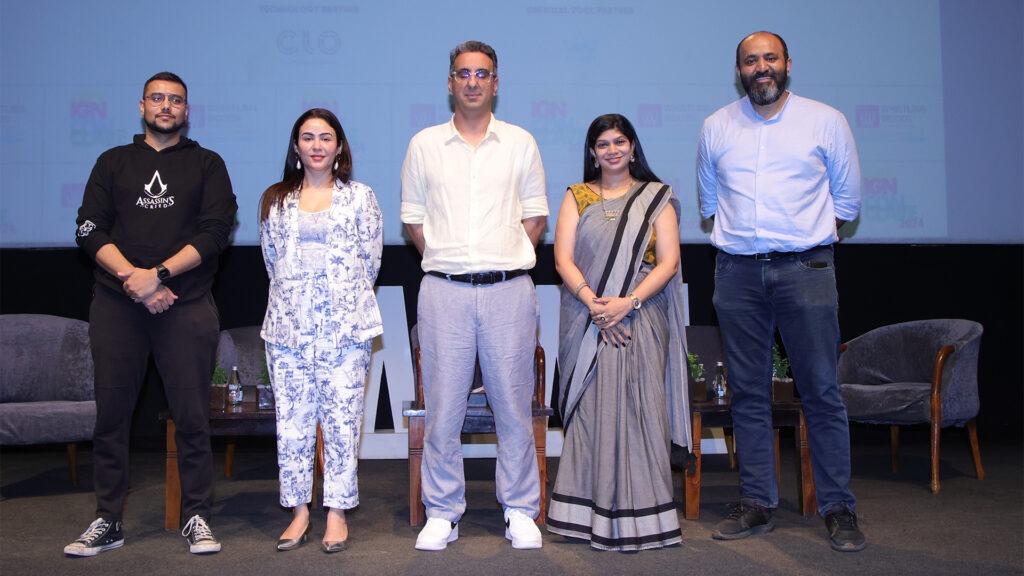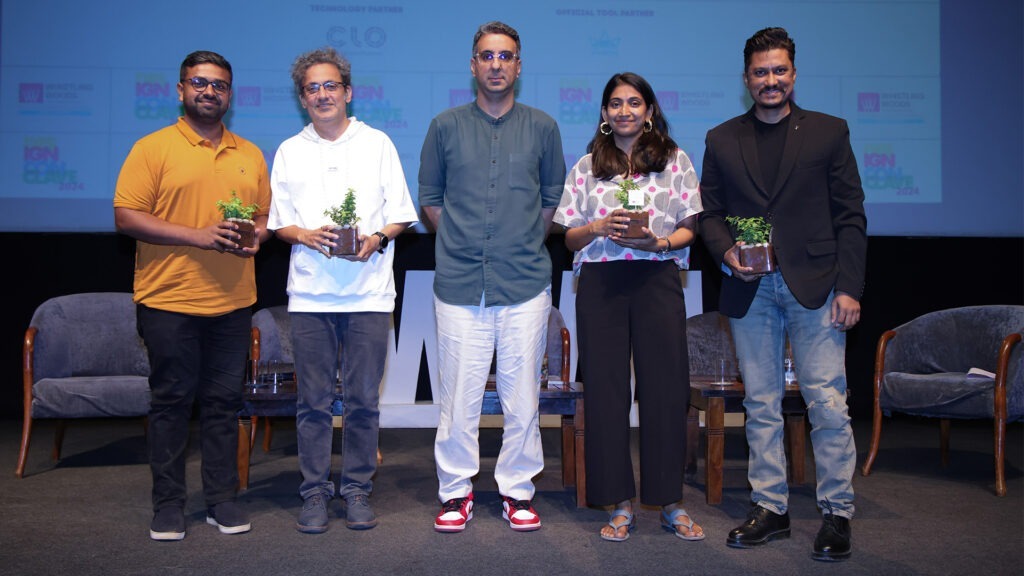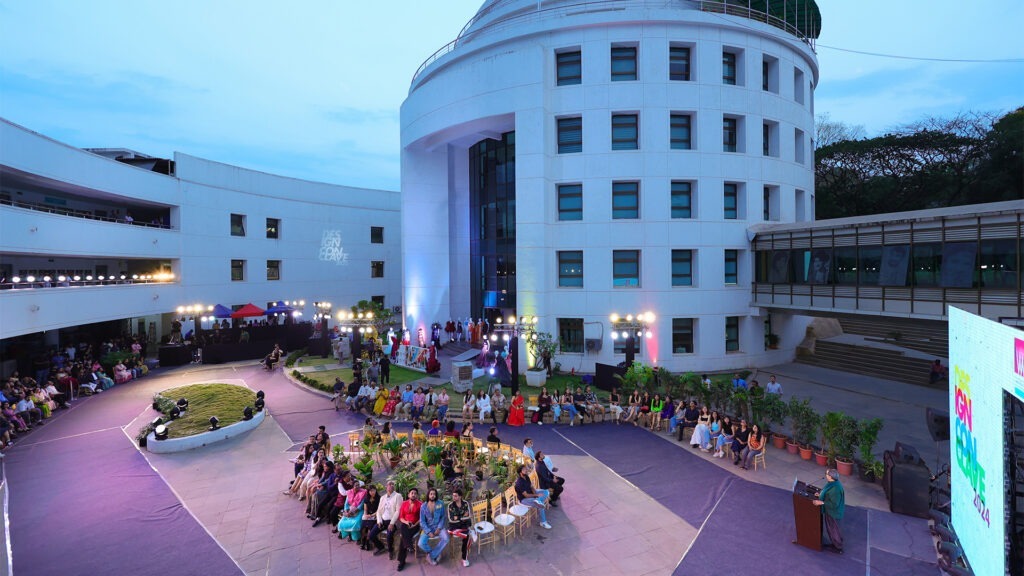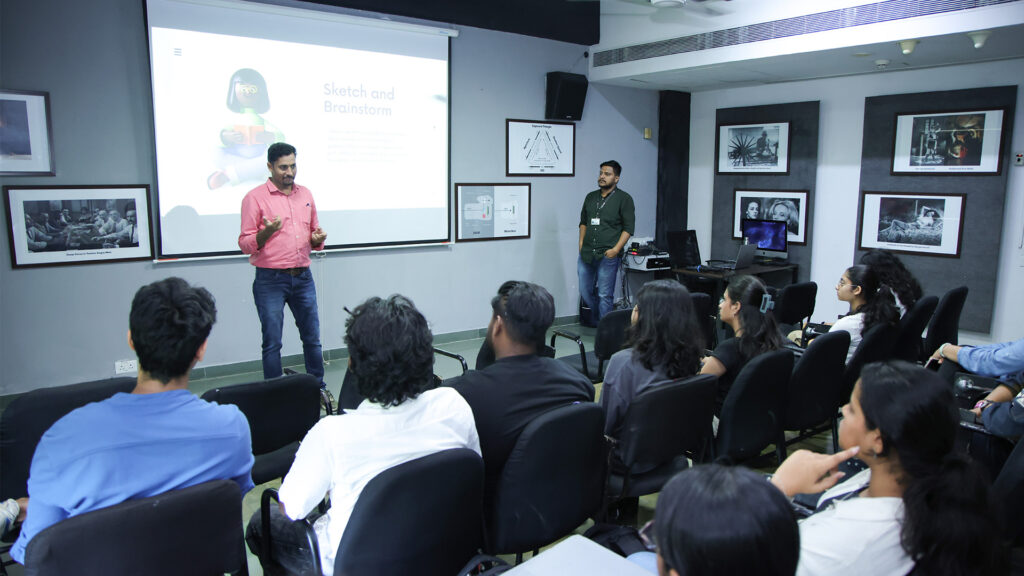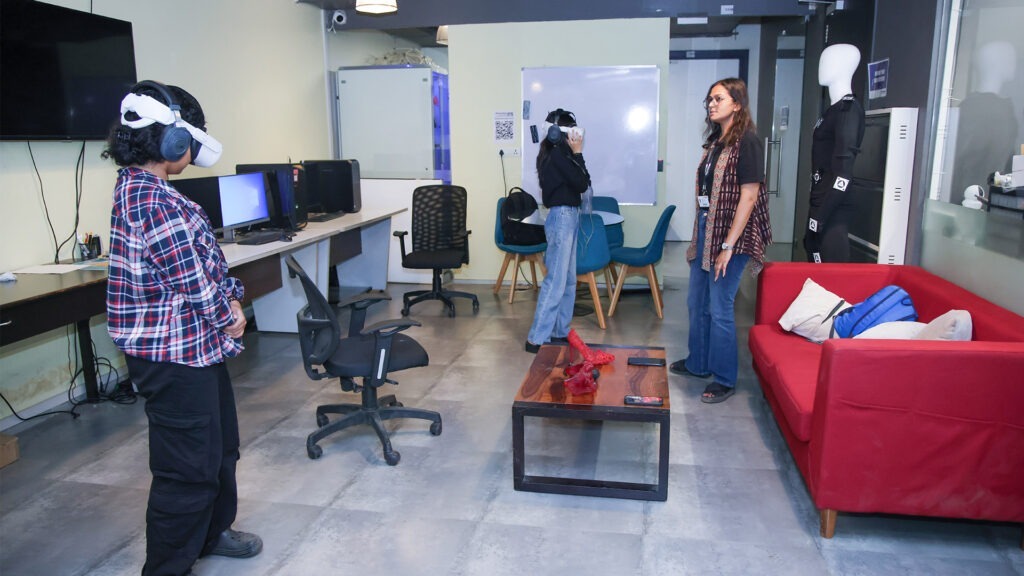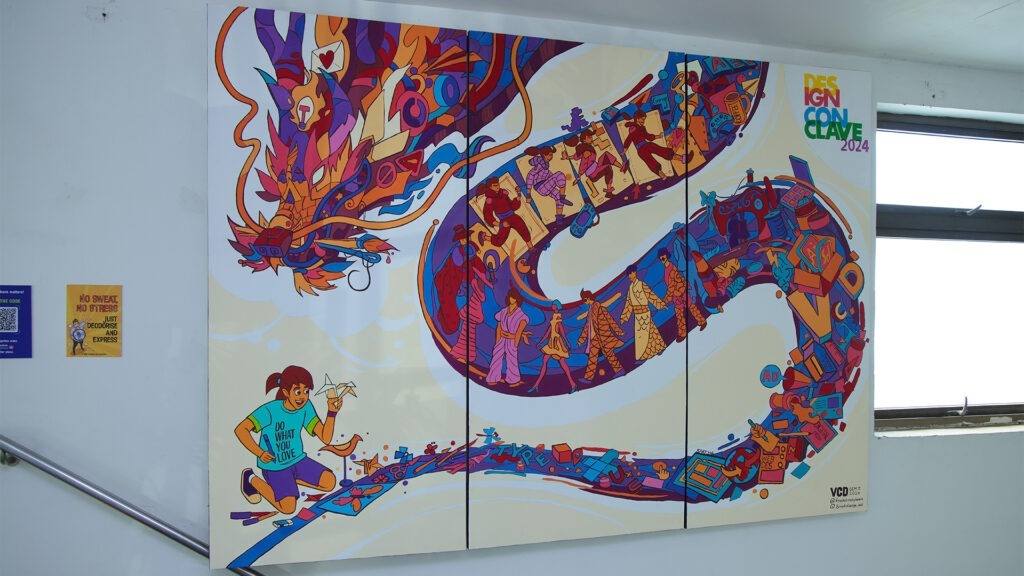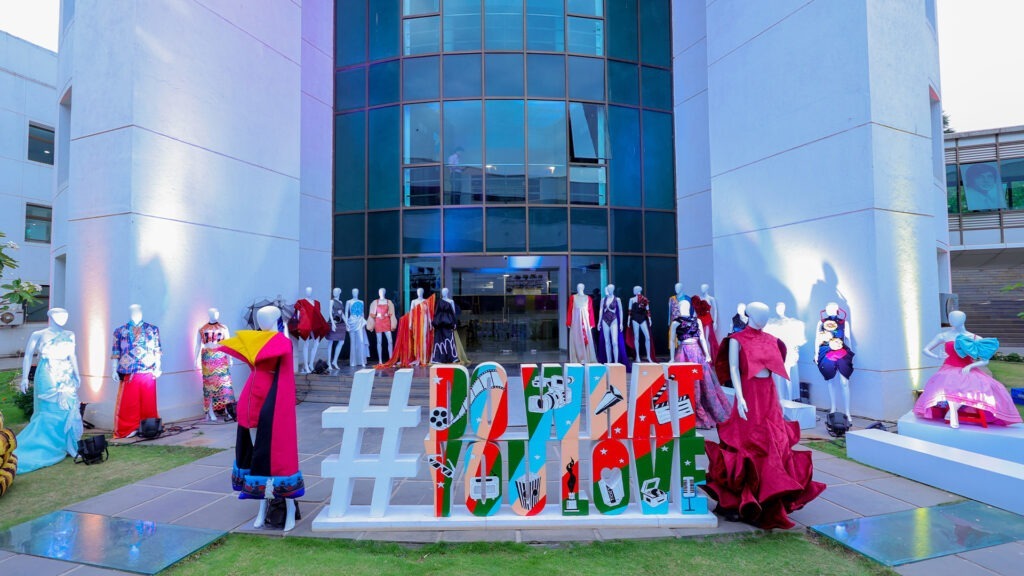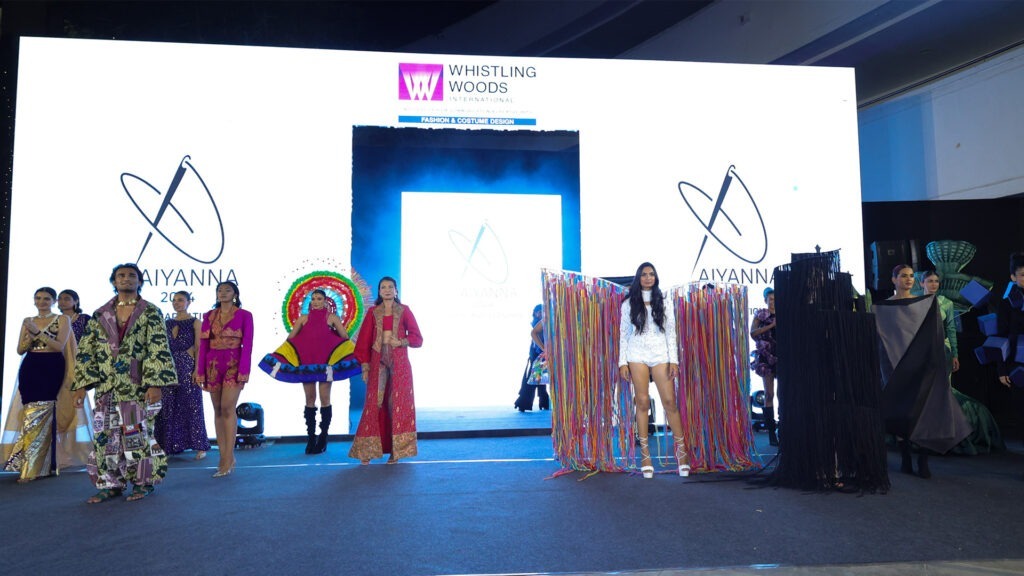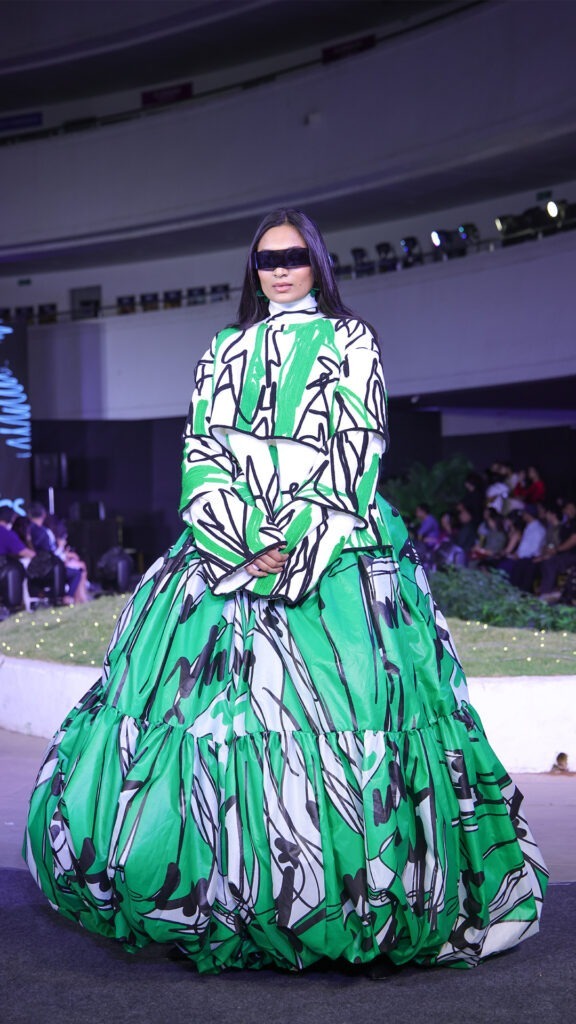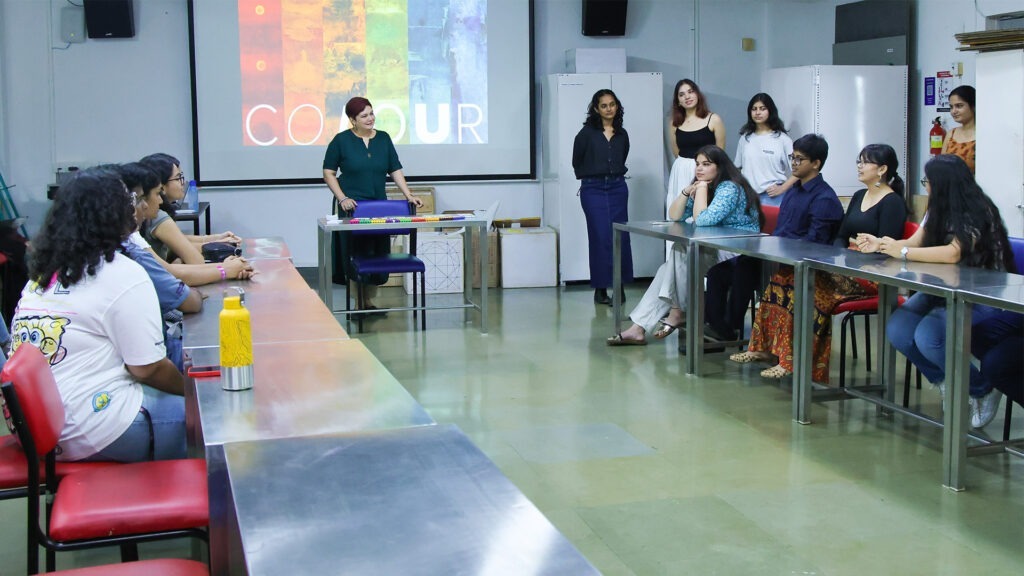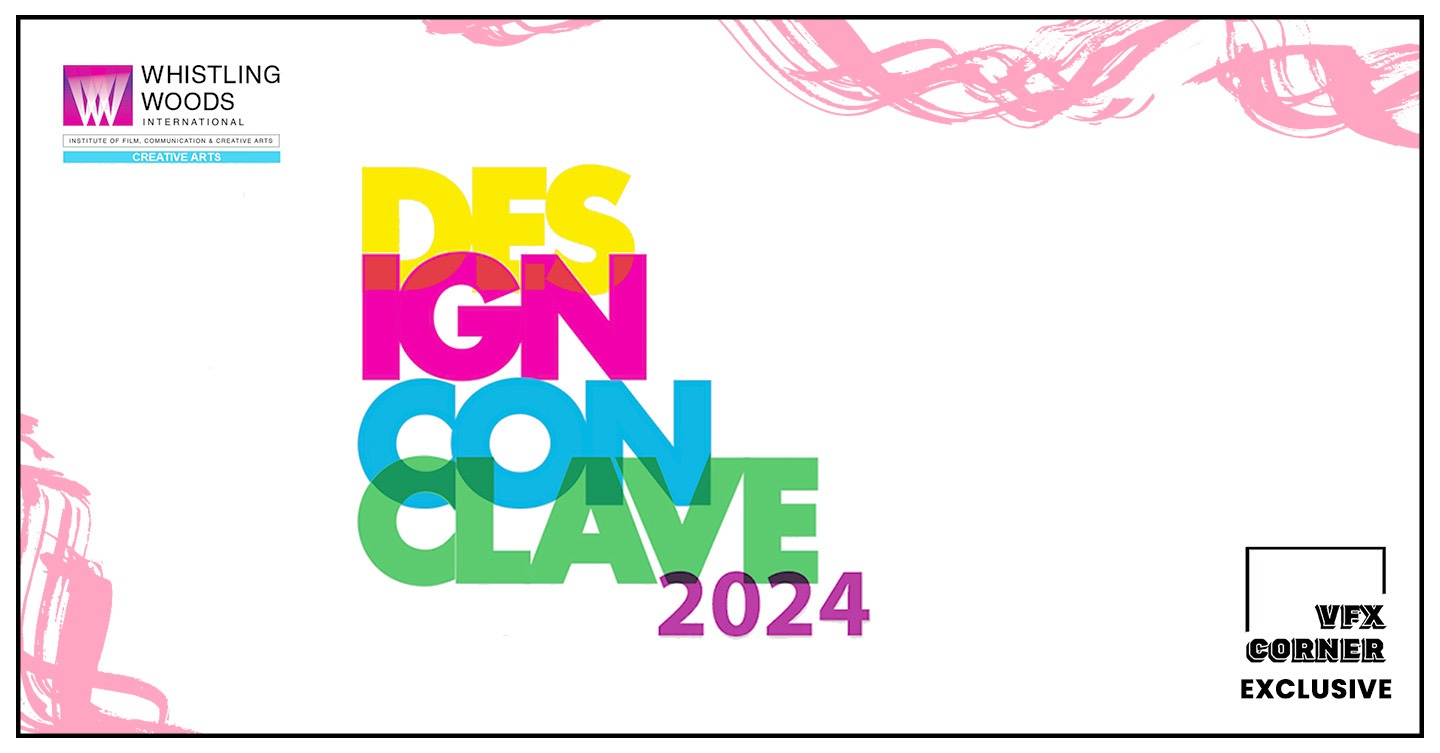
Design Conclave 2024
Our exclusive interview behind the successful event Design Conclave 2024 by Whistling Woods International School of Creative Arts.
Can you provide a brief overview of the Design Conclave 2024 and its significance for the creative arts community?
Design Conclave, hosted annually by Whistling Woods International (WWI) School of Creative Arts (SCA), is a dynamic showcase aimed at educating, inspiring, and empowering design students and enthusiasts. This curated event serves as a platform for students specialising in Animation & Game Design, Fashion & Costume Design, and Visual Communication Design (VCD) to unveil their talents and creativity.
Design Conclave celebrates the transformative power of design through engaging industry panel discussions, interactive workshops and captivating student work showcase, which fosters an environment where ideas flourish and innovation thrives.
What was the inspiration behind hosting the Design Conclave at Whistling Woods International?
Vivek Nag & Jaydev Dhakan: For a while we had been thinking about how to best showcase student work. Within the animation and gaming industries there are so many different roles and skillsets that need to come together to work. The idea for the Design Conclave started off with a simple thought, getting students to understand the value of presenting not only the final film or game, but also the process of creating it. When we review student assignments and projects students get feedback from us. Design Conclave was an extension of that, where students can get critical feedback from industry professionals and general audiences. So, the inspiration for the Design Conclave was to create a space for these interactions to take place in an organic manner.
Jewellyn Alvares: The aim of the Design Conclave is to establish an annual design festival that showcases the School of Creative Arts as a prominent entity in various design fields such as Fashion, Visual Communication Design, Animation, and Game Design. Its goal is to invite aspiring designers to glean insights from industry experts on the significance of choosing design as a career path, selecting the appropriate specialisation, evaluating educational institutions, and why Whistling Woods International stands out as the ideal choice to be.
How did Whistling Woods International School of Creative Arts prepare for this year’s Design Conclave?
Vivek Nag & Jaydev Dhakan: So, this was the first time that we decided to host the Design Conclave along with the Dept. of Fashion and Visual Communication Design. The idea came from the Marketing team and initially it felt a little too much to pull off, but with the support of the Events and Operations team here at WWI it was quite simple. So, while Operations and Marketing teams were busy putting together the display spaces, we were simply focused on ensuring a flow for the student work. Over the 4-year programme that we have, our students end up having a large body of work to display, so honestly the challenge was curating and organising some of the best student works.
Jewellyn Alvares: The Dept. of Fashion & Costume Design introduced two new and engaging workshops in Fashion Filmmaking and Syringe Tie Dyeing, both of which garnered significant attendance. Students left feeling inspired and empowered by the new skill sets they acquired, reinforcing the notion that Whistling Woods International is a hub of immense opportunity. Additionally, the closing ceremony featured AIYANNA, the annual graduation showcase of Fashion and Costume Design, which captivated the audience’s attention.
Milindo Taid: With the aim of making a distinct and memorable impact via showcasing of student work, the process of scanning through and selecting the best student work from 2017 till now, was both time and labour intensive, while being rewarding at the same time – for the quality of work that came to the fore, was outstanding. Reaching out to experts in visual communication design, as keynote speaker and panellists for the panel discussions, took considerable time and efforts as well. The VCD department also worked on a large-scale mural by which visitors to the Design Conclave could experience the collaborative creative efforts of the VCD students. Preparations and painting were a painstaking labour of love, as they handmade, with brush on canvas, an expansive mural celebrating the diverse realms of the creative arts – an intensive process in integrating the Dept. of Animation & Game Design, Fashion & Costume Design, and Visual Communication Design into a unified and vibrant masterpiece for the Design Conclave 2024.
What were the key objectives set for the Design Conclave 2024?
The key objectives set for Design Conclave 2024 were to empower aspiring student designers by providing them with valuable insights from industry experts, fostering collaboration and networking opportunities, showcasing the diverse talents of students, and facilitating discussions on pertinent topics shaping the future of design education and industry practices. Through interactive workshops, panel discussions, and student work showcases including Aiyanna 2024 – Fashion Graduation Show, the conclave aimed to inspire creativity, promote excellence in design education, and facilitate dialogue on the importance of quality and innovation in the ever-evolving landscape of creative arts industry. Overall, Design Conclave 2024 sought to serve as a platform for knowledge exchange, skill development, and community building within the design ecosystem.
Can you share some insights into the planning process and how the event came together?
Jewellyn Alvares: From identifying suitable locations for the exhibit, designing the space to facilitating the marketing team’s efficient execution of the location, and procuring necessary collaterals. Scouring the industry to find the most effective panellists capable of bringing a strong voice to the panel discussions. Designing and planning the event marked the campus’ debut as the grand location for the showcase.
Milindo Taid: Agile, and comprehensive coordination at multiple levels were called for, for a plurality of disciplines and non-academic departments were involved in the planning stages and final execution of the event. Clear goals and responsibilities were delineated, and all stakeholders pitched in when it mattered, of keeping a shared vision intact while discharging all duties that accrue to the realisation of that. A series of productive meetings, and continuous communications, helped overcome whatever hurdles and hiccups that cropped up, and all challenges were collectively overcome. Students actively worked towards setting up the exhibition space and putting up the work on display, while also ensuring a seamless navigation for all visitors. Artwork done by the students, as part of the exhibition space, was also greatly appreciated. Students volunteered as hosts for all visiting guests.
What are the key challenges and opportunities in professional education in design today?
Vivek Nag & Jaydev Dhakan: I think the major challenge we have in design education is a lack of awareness. Students in general are not aware of the various disciplines of design that exist today. Opening the minds of the younger generation to the various disciplines is one of the key areas that the industry and education professionals need to actively work towards. Talking about the opportunity though, the multiple disciplines of design all co-exist and evolve together. One of the better opportunities that we have here at WWI is that since all the schools coexists in the same campus, it offers the possibility for a seamless and organic collaborations between the students.
Jewellyn Alvares: Challenges include the constantly evolving demands of the industry, the industry’s reluctance to engage with classrooms and enlighten students and faculty teams, and effectively engaging students in an era characterised by instant gratification and shorter attention spans.
Milindo Taid: Design is a people centred profession, a problem-solving activity, a powerful force that shapes society and culture in myriad ways. Far from being static, it is a profession that is continually in the making of itself, while aiming to enhance and better the quality of life, via interventions in the built, human made environment. The WWI Department of Visual Communication Design seeks to produce the very best young design professionals who are responsible about, and are conscious of, the power of design – committing to the profession with a conscience, to cater to the needs and well-being of millions in India, and across the world. Inventive, groundbreaking innovations are a desirable, and the best of design aims to benefit the most, and not a few. The creative spirit and enterprise are also shaped by what is feasible, viable, and beneficial for all the stakeholders in a design intervention – all of which adds layers of complexity to any design project. These complexities and ambiguities must be accounted for, and the curriculum must incorporate these contexts (for any design pedagogy to be worthy,) in the interest of the larger design needs of the sub-continent of India.
How do industry collaborations, like the one with Ubisoft Mumbai, enhance the learning experience for students?
Vivek Nag & Jaydev Dhakan: I think industry partnerships are vital for the long-term growth of the students. Having students interact with studio professionals during their course allows the students to be in sync with what’s happening in the industry. The courses here at WWI are focused on a hands-on practical approach to learning the art and skills of animation and game design. As such, the industry partnerships also allow the students to showcase and get critical feedback on their work keeping in mind the current trends. All in all, a partnership between the educational institute and a studio creates a great synergy, which eases the students’ journey from institute to studio a lot.
How important is interdisciplinary learning in shaping a well-rounded designer?
Vivek Nag & Jaydev Dhakan: It is extremely important. When students join for a programme here at WWI they are quite confused about the various specialisations and job roles that exist. As such, an interdisciplinary learning allows them to explore their own interests and strengths. Our students take the duration of the course to explore various projects and roles before they choose something that works for them. Also, this exploratory manner of learning allows students to know the roles and responsibilities of other people on the team. So even if a student chooses a specialisation, they are aware of the efforts that go in towards the other specialisations.
Jewellyn Alvares: It is the need of the hour. The industry requires dynamic and versatile talent capable of adapting to various roles within the creative space and beyond.
Milindo Taid: WWI is a multi-disciplinary institute with a 17-year legacy in creative professional education programmes of excellence. The WWI Visual Communication Design department is housed in a fertile, plural, multi-disciplinary environment unlike any other – for here, the design students not only hone their visual design skills and abilities, but also have the unique opportunities to cross over collaborate with other creative disciplines such as music, acting, and film, among others. This inter-disciplinary transference and ‘cross-pollination’ of ideas is a catalyst for innovative, lateral thinking and doing, that the students of design at WWI are uniquely privileged to. Cutting edge international collaborations are also made possible by the department’s active exchange programmes with Visual Design institutes in France.
Tell us more about the student work showcased during the event.
Vivek Nag & Jaydev Dhakan: So, for the animation and game design department we had a large body of work to showcase. We had short films, concept art, stop motion films and props, board games, and digital games. We setup a huge display wall where student work was divided into concept art, comic book, 2D art, 3D art etc. We created a separate wall for the first-year students to showcase and display their works so that the visitors can see the improvement that the students make during the course. Along with this, we setup a lot of computers where visitors can sit down and watch the short films. In another section we had our final year students displaying their work in progress animation and game design projects. The idea was for them to get critical feedback from the industry professionals. We also setup a few tables and had all of them stacked up with board games so that visitors can pick any of the board games created by the students and play them at these tables.
Milindo Taid: The student work that was showcased at Design Conclave 2024 provided a close and inspiring look at the high quality of thinking and doing that unfolds every day, in the Visual Communication Design department. Starting right from the Foundation Year, where the students undergo fundamental design inputs in the first year (design drawing, colour and composition, material understanding – origami, pottery) followed by intensive project-based semesters that culminate in a major design project, undertaken under standard industry conditions, in semester eight (degree/thesis project.) The collective work touched on not only the curricular assignment briefs, but also showcased work done as part of live industry, client driven projects, across a spectrum of visual design practice – brand identity and packaging, typography, poster design, illustration, web design, app design, comic books/sequential art, zines, wayfinding, among others. The showcase also highlighted the work done with our international collaborations with ECV, France – both by the students from France as well as the WWI VCD students.
Aiyanna – The Fashion Show was the closing event for the Design Conclave. Can you share some highlights and the overall response from the audience?
Jewellyn Alvares: The audience was captivated, mesmerized, and transported to different realms as they experienced the meticulously curated showcase. Each piece within the collection served as a portal, inviting viewers to explore unique narratives, immerse themselves in diverse cultures, and engage with a rich tapestry of emotions and ideas. Through careful curation, the showcase not only displayed artistic mastery but also fostered a sense of wonder and curiosity, leaving a lasting impression on all who attended.
What feedback have you received from participants and attendees of the Design Conclave 2024?
Participants and attendees of Design Conclave 2024 have overwhelmingly praised the event for its enriching content, valuable networking opportunities, and inspiring atmosphere. Many have highlighted the insightful panel discussions, interactive workshops, and the impressive showcase of student work as standout features of the conclave. Attendees have expressed appreciation for the diverse perspectives shared by industry experts and the practical knowledge gained through engaging with fellow enthusiasts. Additionally, feedback has been positive regarding the organisation and seamless execution of the event, with many expressing eagerness to participate in future editions. Overall, the overwhelming sentiment has been one of satisfaction and gratitude for the opportunity to be part of such a dynamic and impactful gathering within the design community.
Can you provide an overview of the workshops offered during the Design Conclave 2024?
Design Conclave 2024 offered a diverse range of workshops catering to various facets of design innovation and skill development. Participants had the opportunity to engage in workshops such as ‘Character Design’, exploring the intricacies of creating compelling visual personas, and ‘Colour and Emotions’, delving into the psychological impact of colour in design. For those interested in game development, the ‘Design and Develop a Multiplayer Game’ workshop provided hands-on experience in crafting immersive gaming experiences. Additionally, workshops like ‘New Digital Ecosystem’ offered insights into emerging technologies shaping the future of design. Fashion enthusiasts benefited from workshops like ‘Syringe/Tie Dyeing Techniques on Knit and Denim’, learning innovative fabric manipulation techniques, while ‘Demystifying Fashion Films’ provided valuable insights into the art of visual storytelling in the fashion industry. These workshops collectively enriched participants with practical skills and theoretical knowledge, fostering creativity and innovation in design.
Could you elaborate on the ‘Colour and Emotions’ workshop and its significance in design?
Milindo Taid: Colour is a mighty tool in the Designer’s repertoire, one that allows for successful transfer of ideas and feelings. The study of colour branches out and draws acumen from behavioural sciences, history, culture amongst other things. An appropriate use of colour helps the Designer to create communication that connects, engages, and elicits appropriate action from the audience. The workshop encouraged the curious minds to explore the ability of colour to convey emotions, simple and complex in a playful manner, through the medium of developing characters. The attendees participated in an iterative, collaborative exercise of colour perception and representation. The final output were stickers that were an embodiment of colour and emotions as perceived and represented by the participants thus imparting a practical understanding of the subject.
What skills has participants gained from the ‘Design and Develop a Multiplayer Game’ workshop?
Vivek Nag & Jaydev Dhakan: So, the ‘Design and Develop a Multiplayer Game’ workshop aims at introducing the visitors to the process of creating a multiplayer game. Our graduating batch of 2021 designed and developed a great multiplayer game. Which, as a separate initiative at WWI we decided to incubate and want to take further to launching. The workshop focuses on showing the work and the process the students followed to create the game. The idea here is to get anyone who is interested in game design and development, to really understand the skills and efforts that are required to create a game.
How do workshops like ‘New Digital Ecosystem’ help students adapt to the latest technological advancements in design?
Workshops like ‘New Digital Ecosystem’ play a pivotal role in preparing students for the rapidly evolving landscape of design by offering invaluable insights into emerging media and technology. By providing a platform for exploration and discussion, the workshop empowered students to understand the intersection of creativity, design, communication, fashion, and advertising in the digital realm. Through hands-on activities and engaging discussions, participants gained practical knowledge and skills, enabling them to adapt to and harness the latest technological advancements effectively. By staying abreast of emerging trends and opportunities in the digital sphere, students are better equipped to navigate and succeed in the dynamic field of design.
What skills participants gained from the ‘Demystifying Fashion Films’ and ‘Syringe Tie Dyeing Techniques of Knit & Demin’ workshop?
Jewellyn Alvares: Participants in the ‘Demystifying Fashion Films’ workshop acquired a comprehensive set of skills essential for fashion filmmaking. They gained insights into the history and conceptualisation of fashion films, learning how to brainstorm ideas, collaborate with brands, and assemble a team to execute their vision. Practical lessons covered technical aspects such as lighting, camera operation, editing, music, and colour grading, equipping participants with the tools to produce captivating fashion content. The Q&A session provided clarity on low-budget filmmaking approaches, emphasising the accessibility of smartphone technology for creative expression in fashion filmmaking.
In the ‘Syringe Tie Dyeing Techniques of Knit & Denim’ workshop, participants honed their skills in ice dyeing and injection dyeing, unique techniques for customising tote bags. Through hands-on experience, they learned how to apply these methods creatively, transforming plain tote bags into personalised works of art. By mastering these dyeing techniques, participants expanded their repertoire of design skills, gaining practical knowledge that enhances their ability to innovate and add value to their creative endeavours.
Are there any plans to make the Design Conclave an even bigger event in the coming years?
Vivek Nag & Jaydev Dhakan: Yes of course! The idea of Design Conclave is to educate the general population about the various opportunities and trends in the School of Creative Arts. Design Conclave is a great platform for us to reach the larger audience to raise awareness about this. We would love to see it grow from a simple idea of showcasing student work, to becoming a hub where professional designers, student designers and aspiring designers can all come together and have a seamless and organic exchange of ideas and knowledge.
Jewellyn Alvares: The scope of engaging in any endeavour within the institution is accompanied by the opportunity for expansion and growth, a trajectory that is expected to steadily increase with each passing year. As individuals immerse themselves in various activities, projects, and initiatives offered by the institution, they not only enhance their skills but also contribute to the collective evolution of the institution itself. This ongoing process of growth and development is fuelled by the combined efforts of students, faculty, and staff, each adding their unique perspectives, talents, and contributions to the institution’s journey towards continuous improvement and advancement.
How do you envision the future of design education and industry collaboration, especially after hosting such an impactful event?
Jewellyn Alvares: It is optimism that drives us, hoping that the industry receives our proteges with open arms and finds our education system apt to fulfill industry needs. A multi-pronged approach to design that opens minds to the pressing questions posed to students about design. It’s not solely about aesthetics or skill sets, but about applying one’s fundamental skills and guiding them through the final stages.
Milindo Taid: The future of design education resides in the practice of design at the cutting edge of quality, above all. Students of the Visual Communication Design programme at WWI, are made industry ready, by having curricular inputs which challenge them to closely assess the intersections of business, technology and society, while having a close interface with industry professionals who come in as visiting faculty, as well as project mentors. The Design Strategies and Management module in the Visual Communication Design programme at WWI is led by industry leaders from the GCPL Design Lab (Godrej Consumer Products Ltd.) Innovation is not a one off, it is an attitude and a way of being – a way of being that is instilled in students of the WWI Visual Communication Design programme, throughout their learning journey.
What message would you like to convey to aspiring designers and creative enthusiasts who missed out on attending the Design Conclave 2024?
Vivek Nag & Jaydev Dhakan: The only message we would want to share with the creative enthusiasts is to come and attend the Design Conclave. It’s a great space to learn and interact with other students and professionals and have a better understanding of design disciplines across the board.
Jewellyn Alvares: You’ve got to find the most conducive environment to learn about design, channel your creativity, and connect with the right people who can guide you through the process. You’ve got to explore, be curious, and embark on a search for the niche where you will thrive as a human first, and then as a learner, thus paving the path towards turning a passion for design into a lucrative career.
Milindo Taid: A good design learner must be a sponge, soaking in all there is, for design as a profession is very often considered to be a ‘generalist’ profession – design knowledge and know-how is a broad spectrum of expertise and sensibilities, applications of which are more ‘specific,’ via design interventions that meet a wide range of human needs. It is not feasible to practice ‘good design’ without sensitivity, curiosity, teamwork, and empathy. India is dubbed a sub-continent not for nothing (the most populous nation currently,) and to attempt to cater to the needs and requirements of the vast numbers of people, is not only a challenging proposition, but may seem daunting, more than anything else. There are design opportunities that present themselves, if we know where to look, and how to look, and in always centring people and wellbeing, at the heart of any design process, will ensure that the desired end impact is met, more than well.
Whistling Woods International – School of Creative Arts
Vivek Nag – HOD, Animation;
Jaydev Dhakan – HOD, Game Design;
Jewellyn Alvares – HOD, Fashion & Costume Design;
Milindo Taid – HOD, Visual Communication Design
About the author
-
Based in India. Khalikh is a Previs and Cinematic Designer with over 6 years of experience in the Indian Film Industry. His passion for films and animation led him to the city of dreams, Mumbai, and he found the world of filmmaking. He loves to share knowledge and he believes what J.M. Cornwell has rightly said "“Knowledge is wasted when it isn't shared.”




